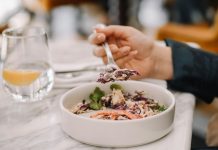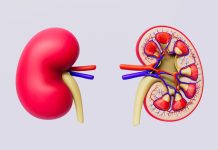
Managing type 2 diabetes requires careful attention to your diet, including the kinds of fruits you eat.
While fruits provide many health benefits, such as essential vitamins, fiber, and antioxidants, some fruits have a high glycemic index (GI) that can cause blood sugar spikes. Therefore, it’s essential to select fruits wisely.
Understanding Type 2 Diabetes
Type 2 diabetes is a metabolic disorder characterized by the body’s inability to produce or use insulin effectively. Insulin is a hormone that manages blood sugar levels.
When the body is insulin-resistant or cannot generate sufficient insulin, blood sugar levels can rise, leading to various health complications.
Best Fruits for Type 2 Diabetes
Berries: Berries, such as strawberries, blueberries, and raspberries, are excellent choices because they are low in carbohydrates, have a low GI, and are rich in fiber, antioxidants, and vitamins.
Avocado: Avocados are low in carbohydrates but high in healthy fats, fiber, and potassium. They also contain antioxidants and anti-inflammatory compounds beneficial for overall health.
Cherries: Cherries are low in carbohydrates and have a low GI, making them suitable for people with type 2 diabetes. They also contain antioxidants that can reduce inflammation and protect against various diseases.
Grapefruit: This low-calorie fruit is high in fiber, vitamins, and antioxidants and has a low GI, making it a good choice for people with type 2 diabetes.
Apples: Apples are rich in fiber and antioxidants and have a low GI, which can reduce the risk of heart disease and certain types of cancer.
Worst Fruits for Type 2 Diabetes
Watermelon: Although low in carbohydrates and calories, watermelon has a high GI and can raise blood sugar levels.
Pineapple: Pineapples have a high GI and are high in sugar and carbohydrates, which can cause blood sugar spikes.
Mangoes: Mangoes are high in sugar and carbohydrates, making them a poor choice for people with type 2 diabetes.
Grapes: Despite their antioxidant properties, grapes have a high GI and are high in sugar and carbohydrates.
Dried fruits: Dried fruits, such as raisins, dates, and prunes, are high in sugar and carbohydrates, making them unsuitable for people with type 2 diabetes.
Fruit juice: Fruit juice, although derived from fruits, is high in sugar and carbohydrates and lacks fiber, which can lead to rapid blood sugar spikes.
Conclusion
While fruits are a crucial part of a healthy diet, people with type 2 diabetes must choose carefully.
Low-GI fruits such as berries, avocados, grapefruit, and apples are recommended, while high-GI fruits like watermelon, pineapple, mangoes, and grapes should be avoided.
Dried fruits and fruit juice, despite their nutritional benefits, are high in sugar and carbohydrates and should be consumed in moderation.
A balanced diet including a variety of fruits can help maintain blood sugar levels and mitigate health risks associated with type 2 diabetes.
If you care about diabetes, please read studies about the key cause of type 2 diabetes, and this eating habit could help reduce the risk of type 2 diabetes.
For more information about nutrition, please see recent studies about unhealthy plant-based diets linked to metabolic syndrome, and results showing ultrasound may help reverse type 2 diabetes.
Follow us on Twitter for more articles about this topic.
Copyright © 2023 Knowridge Science Report. All rights reserved.



